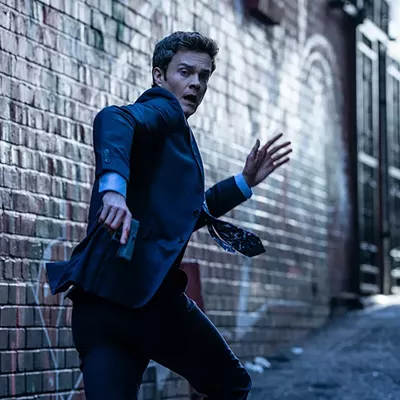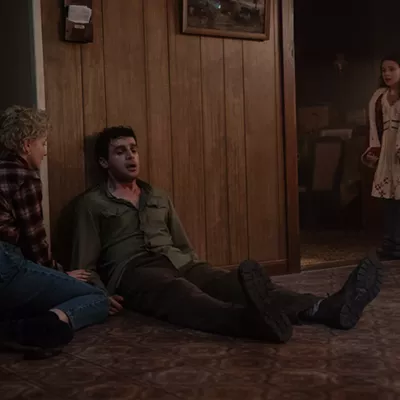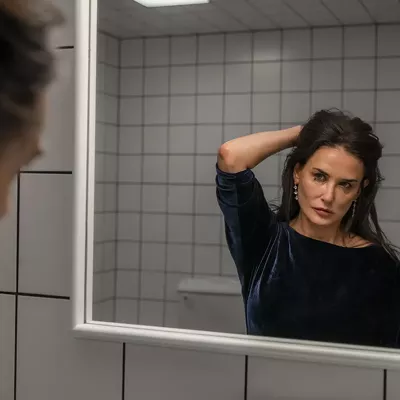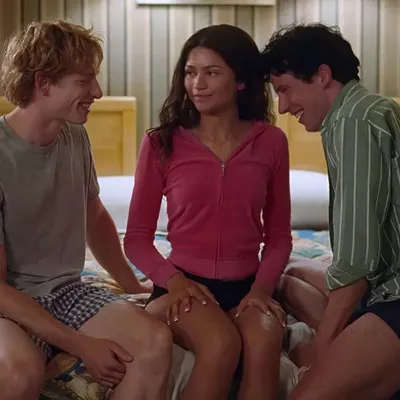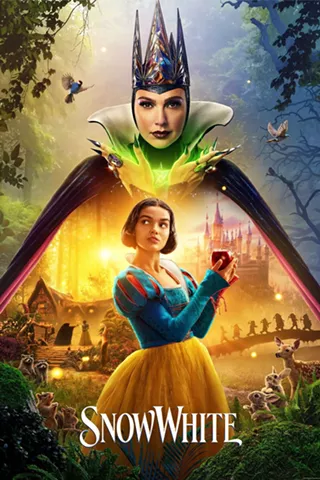If you do stick it out in spite of the simple opening and the southern European ancestry of the film critic, you'll find a film that is, in its visual inventiveness and complexity, truly dazzling. And I know that movie reviewers like to use the word "dazzling" to describe things like Steven Spielberg's scrotum and the Treaty of Westphalia, but here I mean it as indicative of a visual spectacle that so absorbs the eye that one cannot look away.
There was a time when animated films were concerned with the originality and aesthetic force of their visuals, and they expressed this with surreal imagery and a kind of non-naturalism that was drawn from mid-20th-century painting and illustration. Disney's Fantasia, though a cheesy example, is all about showing what the animator can do with pen and ink. Fantastic Planet, much more successfully, is so visually unusual and captivating that the story could have been as bad as Dick Cheney's intentions and it would still have been an excellent film.
With the turn to computer animation the efforts of the animators have mostly gone toward creating smoothly moving 3-D images and perfectly rendered environments. But I think they've been so amazed at what they can do in terms of cartoon-naturalism that they've neglected making the images and backgrounds inherently interesting in their own right.
Azur and Asmar's director, Michel Ocelot, is an exception here. His film is filled with rich mosaics of multicolored leaves, flowers and tiles. Much of the background art is two-dimensional, but then, with computer assistance, tilted so as to retain the three-dimensionality of the scene. But it's not the computer aspect that makes it work (except insofar as it allows Ocelot to produce repeating patterns that would be practically impossible to do by hand), it's how thoughtful the compositions are. They're a combination of classic Islamic tile patterns, the cut-out artwork of Eric Carle, and the sort of fractal psychedelia that appears after you ingest a forest full of tainted Mandelbrot sets. But none of that does it justice: Ocelot is an original and his designs need to be seen.
All the emphasis on the visuals shouldn't be taken as a slight to the story, which could carry the movie all on its own. It starts with a classic fairy tale structure: In medieval France, two children are cared for by an Arabian wet-nurse. One is Azur, son of a wealthy French merchant; the other is Asmar, the nurse's son. When Azur reaches his early teens, though, his cold-hearted father sends the nurse and her son away.
Years later Azur decides to chase after a bedtime story that his nurse had told him: Somewhere in her land lives a creature called the Jinn Fairy. Whoever can overcome a series of tests and find the Jinn's hidden cave can marry her. He sets off and is shipwrecked somewhere on the Arabian peninsula.
There he encounters a country alien to his own, but one rich in design and color. Traditional folk-story elements come together with Ocelot's exuberant imagination to carry Azur through battles with bandits, encounters with precocious princesses and travels into caves filled with otherworldly technology and art. The story is careful in its political implications, going for a "can't we all just get along" message that is sweet but not unpleasantly sappy. Example of silly prejudices and superstitions are balanced out so as to make the Europeans and Arabs seem equally kind and cruel, intelligent and ignorant. By the end, a party of Muslims, Christians and Jews is needed to solve a mystery, but the fact that the group is of mixed backgrounds isn't rammed down the viewer's throat; it develops naturally, and with little comment, in the course of the story.
I saw the film with a Canadian lawyer and an Argentinean philosopher, both of whom gave it high marks, though I think it may have been a little over the head of the average Canadian. Ha! I kid. Canadians are wonderful people who in no way smell of fish. But my point is that this may be a film that virtually anyone can enjoy. It's a children's movie, but it works just as well for adults. And not in the deceitful way that adults are asked to enjoy contemporary children's cartoons: There are no inside jokes or special asides directed at the grown-ups and slipped past the kids here. Azur and Asmar creates entertainment not from a two-tiered system of comedy, but by making a story and a spectacle that works universally. Well paced, with none of the cheap gags or simplistic violence that mark much kiddie cinema, it's nonetheless filled with action, intrigue, tension, and most of all, beauty.




